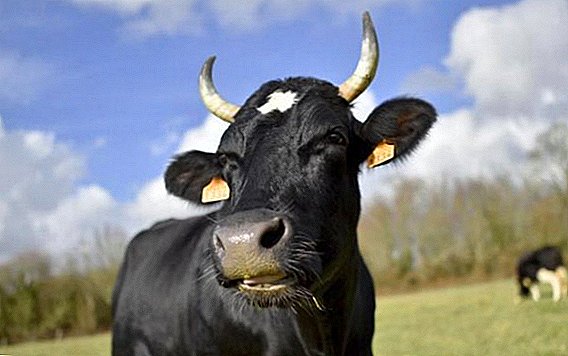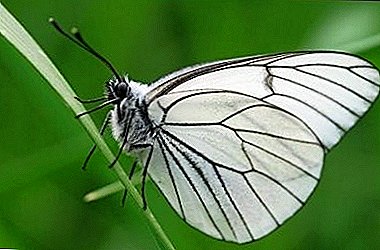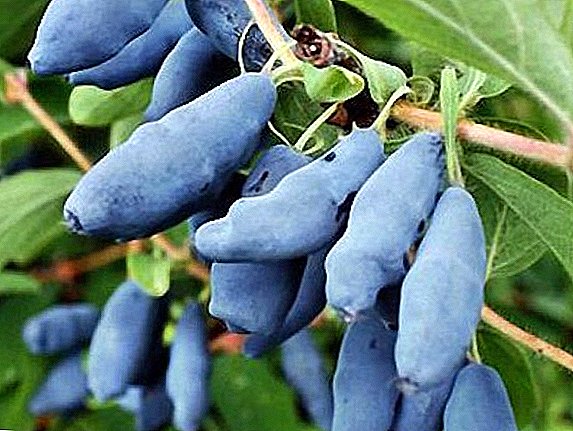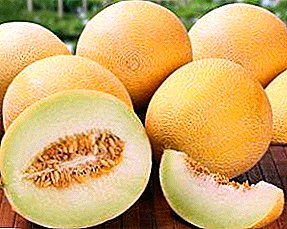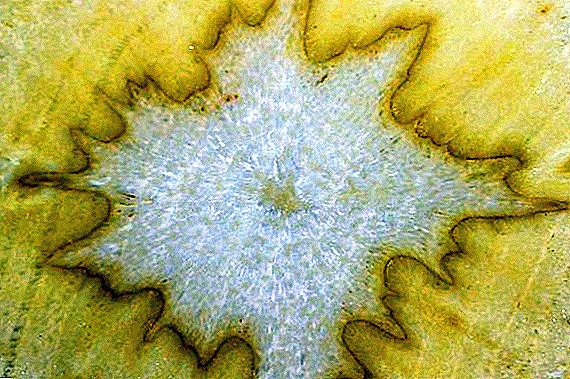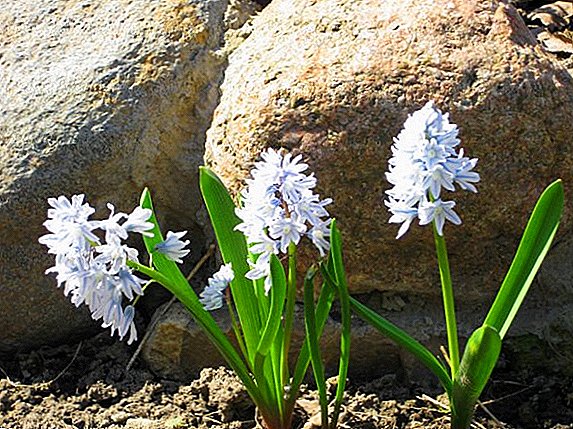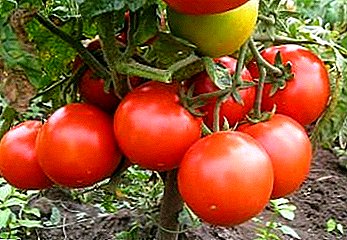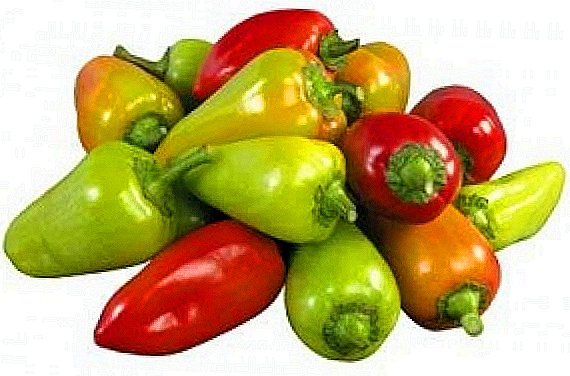
All beginners and experienced gardeners know that pepper is a heat-loving and light-loving culture.
This plant is used not only for culinary preparation, but also in folk and traditional medicine.
Pepper contains a lot of nutrients and vitamins, surpassing even citrus crops.
Each of the gardeners have their own secrets of growing plants, which help them to get good yields, overcoming the weather conditions of Siberia.
Pepper is a perennial crop in tropical climates, and annual for Siberia.
But even this did not prevent pepper lovers from growing it in their garden.
Despite the Mexican origin of pepper, this vegetable can be grown in Siberian conditions. To do this, you need to know all the concepts of care and planting for culture. Agrotechnical measures require strict compliance, otherwise you may be disappointed in the resulting harvest.
Before buying pepper seeds, you should pay attention to the following items:
- On the package must be written "Variety for Siberia."
- You also need to pay attention to the shelf life of seeds.
- On the "packing date" should also pay attention, it should be no more than two years.
Sweet pepper "California miracle": its characteristics, advantages and disadvantages

California miracle is one of the most famous varieties of sweet pepper.
Its ripening period is mid-season.
The time span from planting to stalling ripened fruits is a little more than 120 days.
Shrubs grow of medium size, too, somewhere between 65-75 cm. On a single bush, up to ten fruits can grow at a time. The plant is determinant.
Pepper fruits are large, in weight reach 150 grams. The flesh is very fleshy and juicy. The wall thickness is 8 mm. The shape of the fruit is cuboid, with a good selection of ribbing.
It has a very dense, shiny and smooth skin. During ripening, it acquires a green color, and at full maturity, a bright red tint.
I want to say about the very pronounced taste of pepper with a certain sweetness and juiciness. Thanks to these qualities, the variety is suitable for any culinary delights and perfectly decorate your table.
This grade completely unpretentious and gives an excellent opportunity to get good yields, even in unstable weather conditions. The crop yield is up to ten kilograms per square meter.
Certain positive traits California Miracle:
- Culture refers to the mid-season varieties.
- High yield well affects his reputation.
- Well resists various diseases that attack this variety.
- Pepper can be used in all culinary directions.
- Does not require a very careful care.
- The fruits are distinguished by their size.
- It has a very attractive taste characteristics.
- 100% seed germination.
- California miracle is one of the most famous varieties.
- It tolerates various weather changes.
On the negative side of this pepper can not say anything.
Sweet pepper "Belozerka"

STAM culture. Ripening period pepper mid. The time interval from planting to stalling ripened fruits is slightly less than four months.
Shrubs grow small height of about 45-70 cm, which indicates the compactness of the plant.
Bushes heavily leafy. Pepper "Belozerka" can be grown both in the open air and in the greenhouse.
The fruits of pepper are of medium size, in weight reach 100 grams. The flesh is very fleshy and juicy. The wall thickness is 6 mm.
The shape of the fruit is in the form of a wide cone, with small prominent ribs and a sharp tip. It has a shiny and smooth skin. During ripening, it acquires a white color with a golden hue, and at full maturity it acquires a red color.
Fruits on the trunk are in a hanging state. Pepper ripens very amicably.
I want to say about the taste of pepper possessing sweetness and juiciness, as well as the culture has a characteristic pepper flavor. Due to these characteristics, the grade suitable for any culinary delights and perfectly decorate any cooked dishes.
Still fruits differ in the sufficient content of vitamin C, very important for the person.
The crop yield is up to eight kilograms per square meter.
Positive characteristics characteristic of this variety:
- Culture refers to the medium early varieties.
- High yield is a good indicator.
- It is well resisted by such diseases as: top, wet and dry rot, Alternaria, Verticillia.
- Culture is used in all directions of processing and fresh consumption.
- Pepper "Belozerka" can be transported over long distances, as it has high quality fruits.
- The fruits are distinguished by their storage for a long time at the same time, do not lose their taste.
- It has a very attractive taste characteristics.
- Uniform ripening of fruits plays a good role.
- Peppers can be grown in open and protected ground.
- Distinguished by its long fruiting.
There are no strong flaws in this type of pepper. But it is necessary to follow the good illumination of the culture, otherwise, in the opposite case, the plant is drawn out, and the flowers and ovaries may fall off at all.
It is also interesting to read about the varieties of pepper for the Moscow region
Sweet pepper "Korenovsky" distinctive features of the variety

The culture is semi-sprawling. Ripening period pepper mid. The time from planting to removal of ripe peppers is about 120 days.
Pepper bushes grow small, about 55-65 cm in height, indicating that the plant is compact.
The leaves of this variety are large enough and have a green color. Pepper "Korenovsky" is recommended to grow both in sheltered places and in open areas.
Pepper of this variety has large fruits, the mass of which may be 165 grams. Like most varieties, pepper has a good juicy flesh.
The wall thickness is 4.5 mm. The shape of the fruit is in the form of a wide truncated cone or in the form of a prism, with small prominent waves.
It has a smooth skin. During maturation acquires a green color, and during the period of biological maturation acquires a red color. Fruits on the trunk are in a scattered state.
It has the usual taste peculiar to pepper and has a pronounced aroma. Its use is universal.
The crop yield is up to four kilograms per square meter.
Virtues Korenovsky pepper, which is worth to tell:
- Korenovsky pepper is a middle-ripening variety of ripening.
- A distinctive feature is the high yield of culture.
- It is opposed to various diseases, and in particular such as: tobacco mosaic.
- Culture is used in all directions of processing and fresh consumption.
- Pepper "Korenovsky" has a high quality fruits.
- It has a very attractive taste characteristics.
- Peppers can be grown in open and protected ground.
- Differs especially large fruits.
- Plus is the compactness of the plant.
- It is also important for a long time of commodity availability.
- Pepper contains such vitamins as C, B, E.
TO disadvantages This variety of pepper includes the following categories:
- Low seed germination.
- It is also sensitive to the lack of trace elements in the soil.
Sweet pepper "Triton": its characteristics, positive and negative qualities

Pepper "Triton" refers to the category of very early ripening crops. The time interval from planting to stalling is two and a half or three months.
Shrubs grow low growth somewhere 35-55 cm. Umbrella-like arrangement of the leaves does not allow the fruit to burn in the sun. From one bush of pepper for the entire period of fruiting culture, you can collect about fifty fruits.
Pepper can be grown in open and closed areas.
Pepper fruits are large, with a maximum weight gain of 150 grams. The flesh is very fleshy and juicy.
The wall thickness is not very thick and is 5 mm. The shape of the fruit is the correct cone, with a small selection of waves. It has a very dense and smooth skin.
During the period of ripening it acquires a yellowish color, and at the period of full maturity a bright red tint. Pepper of this variety is used primarily for processing or various canning.
Pepper "Triton" is completely unpretentious and gives an excellent opportunity to get good yields, even under unstable weather conditions. The crop yield is up to 10.5 kg per square meter.
Positive sides sweet pepper "Triton":
- Culture refers to the varieties of very early maturation, this period is 2.5-3 months.
- Very high yield is a distinctive feature of this variety.
- Well resists various diseases that are inherent in this variety.
- Culture is used in all culinary directions, but most often it is used for canning.
- Does not require scrupulous care.
- The fruits of culture are distinguished by their size.
- The variety is unpretentious to the weather, which does not affect its yield.
- Pepper "Triton" grown on open and closed surfaces
With so many positive characteristics, there is one nuance that needs to be taken into account. When planting seedlings on the bushes be sure to remove the first ovary. If you forget about it, the consequences will be dire, namely, the plant will develop poorly and give very low yields.
And the last variety of sweet pepper, which will be discussed in this article is - "Merchant"

This variety is relatively young. Pepper "Merchant" as well as "Triton" refers to the category of very early ripening crops.
The time span from planting to cutting off fruits takes a little less than three months. Bushes grow to an average height of about 75-85 cm.
Stamp plant, a little sprawling. The leaves are slightly shriveled, small, green. Peppers can be grown in the open and in the greenhouse.
This culture has medium-sized fruits, the weight of which is 70 grams. The fruits are very fragrant. The number of nests is 2-3. Meaty and juicy flesh.
The wall thickness is not very thick and is 5-7 mm. Peppers have a pyramidal shape, with a weak release of waves. The skin of the fetus is smooth and glossy.
During the ripening period, it acquires a green color, and at full maturity, a red color. This variety contains ascorbic acid 169 mg per 100 grams of crude substance. Pepper of this grade is used in various directions.
The crop yield is 1.2-2.3 kilograms per square meter.
The Merchant's Sweet Pepper is distinguished by the following positive characteristics:
- Stable yield of this variety is a good quality.
- The fruits of pepper have a high presentation.
- Culture refers to the varieties of early maturation, this period is 3 months.
- Equally important is a good yield of the plant.
- Well resists various diseases that are inherent in this variety.
- Pepper can be used in all culinary directions.
- Pepper contains a large amount of sugar.
- The fruits of culture are distinguished by their size.
- Sweet pepper "Merchant" can be grown in open and closed areas.
A small nuisance of this culture is that the roots of the plant sensitive to lack of airtherefore it is necessary to gently weed or loosen the top layer of soil.
What are the processes of planting and caring for the crop?

In one bucket of prepared land, add one cup of ash or lime, then mix well.
Pepper seedlings do not tolerate transplantation very well, so you should immediately take a glass and two seeds to a depth of 3 cm to plant there. But before starting the process of planting seeds, they must be processed.
In the Siberian region, the process of sowing pepper is done in March. The temperature of the earth should be + 25 ° C. Then you need to pour the cups of seeds, cover them with a film and put in a sunny place.
For the short summer of Siberia, it is best to choose early ripening varieties.
Feed seedlings can liquid fertilizer for indoor flowers. So have all the necessary components.
Seedlings need to be planted in the ground with a temperature of about + 20 ° C. The distance between adjacent rows should be 85 cm, and between the holes 60 cm.
In each dimple pour one tablespoon of potash fertilizer, without chlorine, then pour it with water. After water is absorbed, it is necessary to plant the seedlings.
Planted seedlings should not be watered during the next seven days until the plant is applied. After taking, watering should be done with warm water every other day.
A prerequisite is the careful loosening of the soil, as it is possible to damage the roots of the plant.
Pepper does not like mineral fertilizers, so they need to be made in minimal proportions. Manure is better not to fertilize.
The place for planting peppers should be chosen at the height and which is well lit.
It is necessary to process disinfectants from various diseases inherent in this culture.
Ripe fruits must be removed on time, which will allow the growth of new and the ripening of other immature fruits.


